Soviet HI-FI and its creators: headphones for one plate or forgotten history Electronics TDK-3 “KVADRA”
Today it is difficult to surprise anyone with multi-channel surround sound. Slightly less people know about the 5.1 and 7.1 headphones that gamers sometimes use. At the same time, the history of the emergence of multi-channel portable sound remains unfairly forgotten.

The fact is that in the 1970s, the first quad recordings appeared, which in turn required the equipment to play them. The logical step was the production of appropriate amplifiers, speakers and, unexpectedly, headphones.
For a period of short interest in quad in the USSR, its own model of headphones of this type, “Electronics TDK-3" KVADRA ", appeared and reached mass production. Their release quickly stopped. Meanwhile, by the end of the 70s, this model, along with the “ECHO” series and the isodynamic TDS-7, was one of the first in the USSR to comply with the HI-FI standard. Under the cut about the history of quad headsets in the USSR and not only.
So, as I said, it all started with the fact that in the 70s record companies and equipment manufacturers suddenly decided that they had exhausted their stereo recordings and had to carry quad to the masses. Part of the works began to be recorded in quad, and to play these records, American, European and Japanese manufacturers began to create the appropriate devices.
The core of quad-systems became amplifiers, receivers, tape recorders and players, to which it was possible to connect speakers and quad-headsets. The latter became a special chic in the technical arsenal of music lovers and audiophiles of that time. For a short 5 - 7 years of global interest in quadro, about 50 experimental and serial models of quad headsets were created in the world. Interestingly, some of them were either created for a specific amplifier, or were generally delivered with an amplifier or receiver as a bonus.
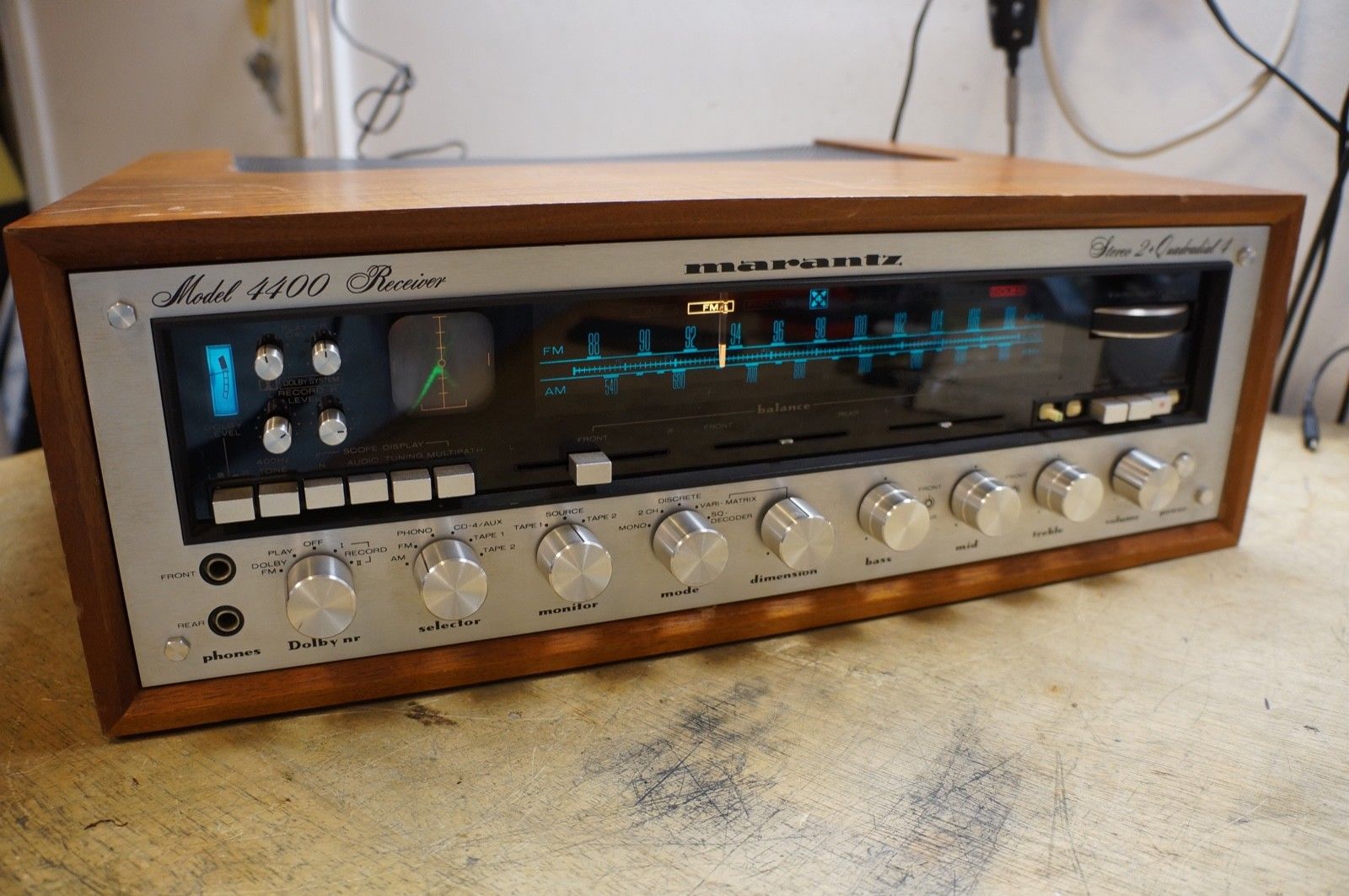
The legendary quad receiver Marantz 4400, for working with this device developed headphones ELEGA DR-147Q, which became the basis for Soviet development
I managed to count more than 30 models that enjoyed relative demand. For interested and collectors I cite a list (almost everything is available on ebay at reasonable prices):
It is quite natural that the trend was noticed in the USSR, where at that time they tried to bring consumer goods, in particular, audio equipment, to mind. Despite the actual absence of quad recordings in the USSR, the headphone manufacturers decided to work ahead of the curve.
To create new headphones, by tradition, the semi-defense enterprise “Agregat” in Saratov was chosen. In the same place, in the neighborhood, at the radio engineering plant No. 887 (NPP “Kontakt”), a little later, they mastered the isodynamic TDS-5. I'm not sure, but I assume that the same team of engineers did it, and “Aggregate” and “Contact” - the names of the same company at different times, if I am mistaken, correct me in the comments.
Two circumstances brought me to this thought: first, the defense character of the enterprise (it is doubtful that two defense enterprises of the same profile will be located in the same city), and the second is that TDS-5 and “Electronics TDK-3“ KVADRA ”were in varying degrees, clones of headphones from the Land of the Rising Sun. I got the impression that it was in Saratov that they were engaged in the development of Japanese devices in their spare time from the military industry. It would be logical to do this by one team in one enterprise.
As a basis for future development, two Japanese samples, already known by that time, were used. The largest number of acoustic and design solutions borrowed from ELEGA DR-147Q (FISHER DR-147Q in the US market), in particular, the location of the speakers, the shape of the cups and other nuances of the acoustic design.

Some design features have been cloned from PANASONIC EAH-41.
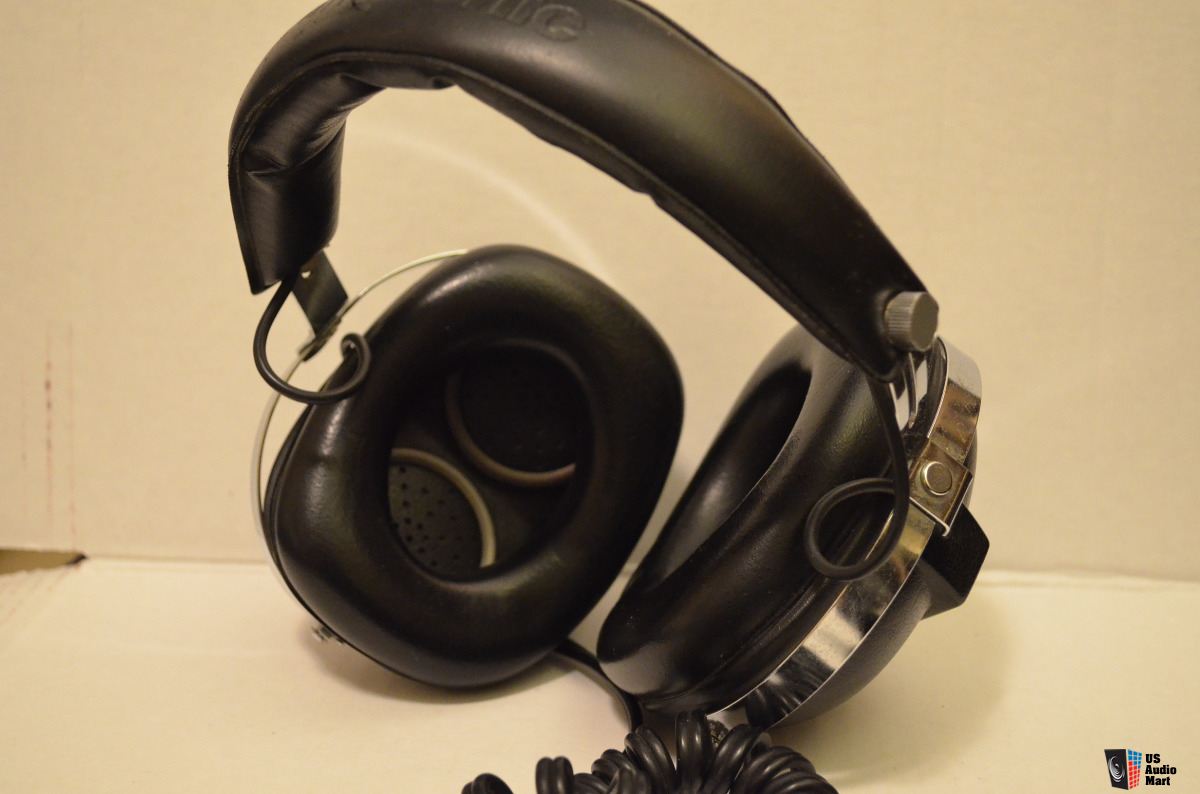
The first production models saw the light in 1979.

For the headphones, traditional 4 dynamic emitters of 0.25GD-10 were used, which, taking into account the acoustic design, made it possible to get high-quality sound by Soviet standards.
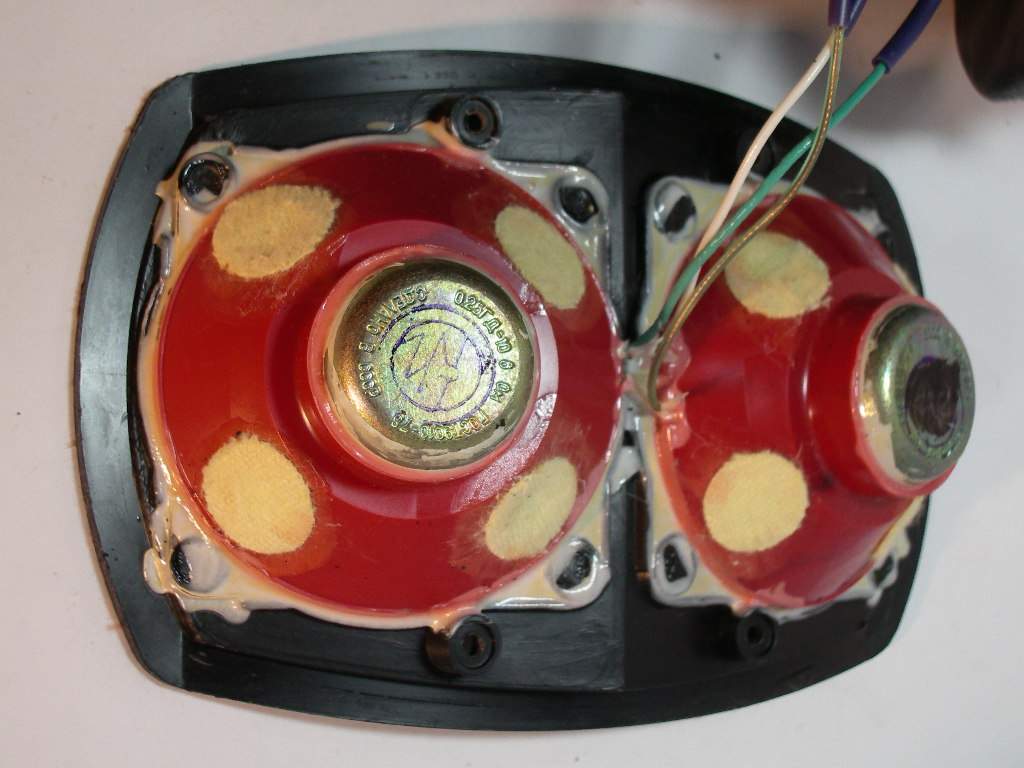
So, the characteristics fully met the requirements of the HI-FI standard, which seemed to a Soviet person to be comparable to space technology.
In general, the characteristics of the miracle headphones were as follows:
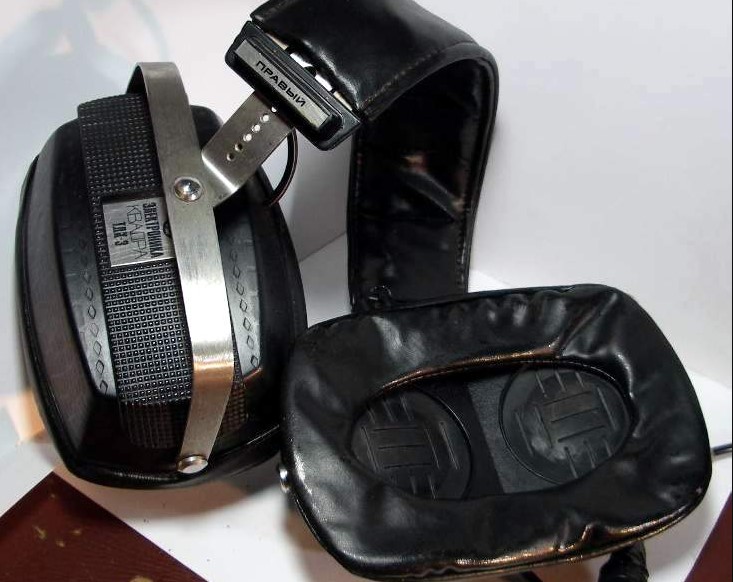
50 rubles - this is almost insane money for the Soviet full-size headphones. It should be noted that the originals in Japan and the United States cost more, even if we consider the unofficial dollar rate.
We can safely say that these headphones in the first place ruined ergonomics. However, this also applies to many Western models. If 10 years before the consumer was ready to endure the torment for the sake of “divine sound,” by the end of the 70s, even a Soviet man, hardened “in battles” with domestic appliances, wanted something relatively comfortable.
But ergonomics and headphones weighing almost a kilogram are weakly compatible things. The Soviet consumer for the imputed sound quality could forgive the device for the almost complete lack of quad recordings, and, frankly, not too pronounced quad effect. I believe that the Soviet people would have cost so-called psevdokvadrofonii, rejoicing in the high density of sound and a large volume of cups, but 800 grams on the head ...
Even in the harsh Saratov quad headsets, the convenient switch, which stood in the Japanese original, was replaced by special adapters due to its design complexity. They were used to provide the opportunity to listen to something in stereo and mono modes.
Most of the Japanese and American "Quarter Riders" were equipped with two Jack type jacks. In contrast, the “Electronics TDK-3“ KVADRA ”was connected to the SG-5 (DIN5) jack, which eliminated confusion with the front and rear channels when using Jack plugs.
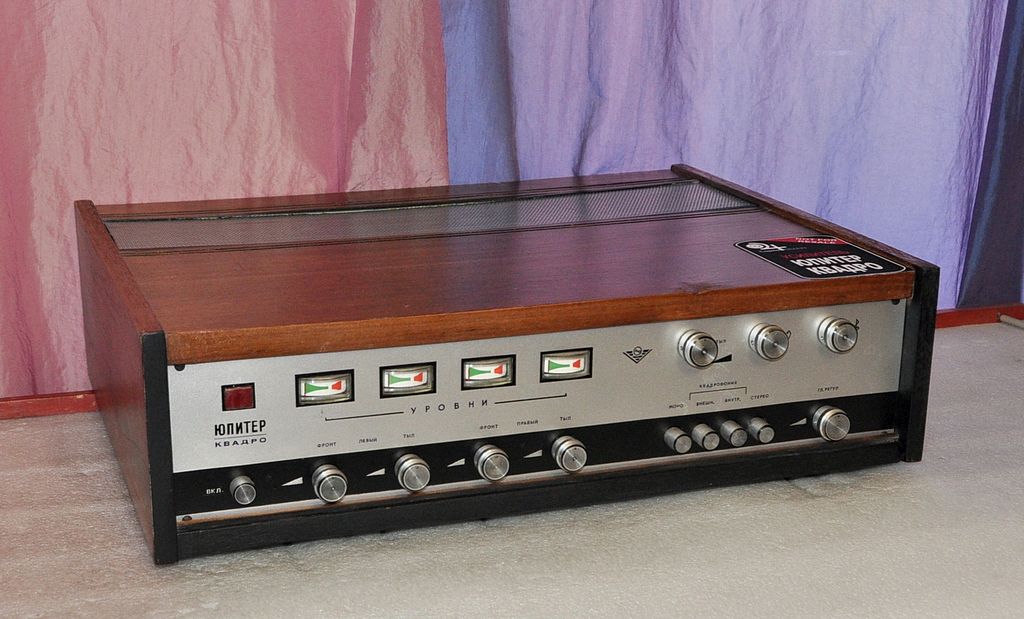
Soviet amplifier "Jupiter - quad "

Quadrophone "Jupiter"
It is interesting that when the decision was made on the serial production of quad headphones, the USSR already had a quad recorder, an amplifier and an electronic background, but until the first quad vinyl appeared, it remained to wait another couple of years.
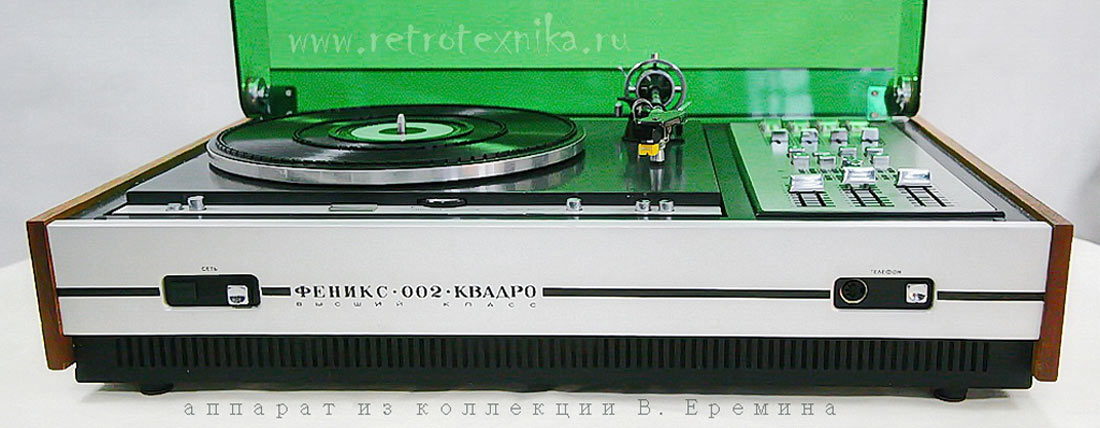
The only quad quadrophone in the USSR, Phoenix-002. The
first and last quad recording on vinyl in the USSR was the Yabloko country group record.
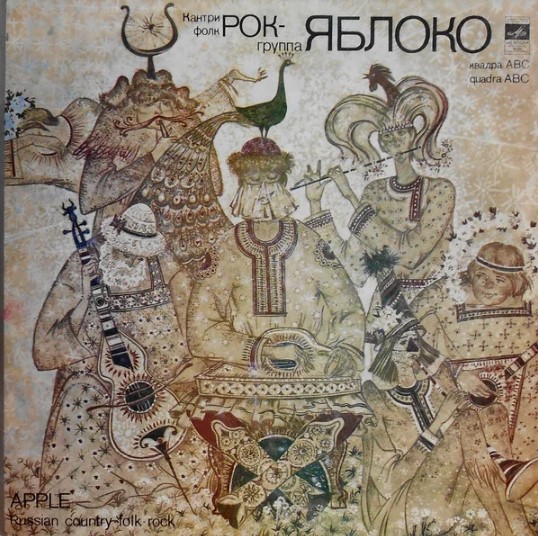
The first and last Soviet quadratic, the album of the Yabloko group
Due to the monstrous cost of 6 Soviet rubles (against the background of the average cost of a regular LP 1.5–2 rubles) and the low popularity of the recorded team, it was practically not sold. With the same success, it was possible to write Leonid Ilyich Brezhnev in the quad speech.
Despite the advertisement of TDK-3 “KVADRA Electronics” in the magazine Radio (No. 9 for 1979) and a surge of interest in quadrophony, the first series of devices were sold with great difficulty by the Soviet retail network. The magazine wrote that the headphones are able to immerse the listener into the atmosphere of the concert hall, but all was in vain. In the USSR, the quadrofony failed even before it began, unlike Japan and the United States, where many companies managed to drown impressive funds in quadro. Anyway, their experience was not in vain, today the logical development of quad headsets in the form of 5.1 and 7.1 headsets is actively used by gamers.
Advertising
In our catalog there are headphones , a lot, different.
The material used photos:
www.rw6ase.narod.ru

The fact is that in the 1970s, the first quad recordings appeared, which in turn required the equipment to play them. The logical step was the production of appropriate amplifiers, speakers and, unexpectedly, headphones.
For a period of short interest in quad in the USSR, its own model of headphones of this type, “Electronics TDK-3" KVADRA ", appeared and reached mass production. Their release quickly stopped. Meanwhile, by the end of the 70s, this model, along with the “ECHO” series and the isodynamic TDS-7, was one of the first in the USSR to comply with the HI-FI standard. Under the cut about the history of quad headsets in the USSR and not only.
Start
So, as I said, it all started with the fact that in the 70s record companies and equipment manufacturers suddenly decided that they had exhausted their stereo recordings and had to carry quad to the masses. Part of the works began to be recorded in quad, and to play these records, American, European and Japanese manufacturers began to create the appropriate devices.
The core of quad-systems became amplifiers, receivers, tape recorders and players, to which it was possible to connect speakers and quad-headsets. The latter became a special chic in the technical arsenal of music lovers and audiophiles of that time. For a short 5 - 7 years of global interest in quadro, about 50 experimental and serial models of quad headsets were created in the world. Interestingly, some of them were either created for a specific amplifier, or were generally delivered with an amplifier or receiver as a bonus.

The legendary quad receiver Marantz 4400, for working with this device developed headphones ELEGA DR-147Q, which became the basis for Soviet development
I managed to count more than 30 models that enjoyed relative demand. For interested and collectors I cite a list (almost everything is available on ebay at reasonable prices):
PANASONIC EAH-41, TOSHIBA HR-40, PIONEER SE-Q404, JVC 5944, KOSS (K 2 + 2, K-6LCQ, PRO 5Q), ELEGA DR-147Q (FISHER DR-147Q), ASAKA HA 50, BAYCREST HB 4000, CAPEHART CH-4C, CRAIG 9418, CHO HS-4000, ELECTRA QHP44, ELECTROPHONIC OH-4, FUTURA 4-channel, GENERAL ELECTRIC H-28, INTERNATIONAL ELECTRONICS CIS-4000, LAFAYETTE F-4400, MEP O4-H, MGA XHP-40, MURA QP-280, NEW MARK HV-401GS, REALISTIC 33-1016, SANSUI QH-44, SEARS 4-channel, SONIC IV, SOUND MD-40DA, MD-401BD, SOUNDESIGN 351, SOUNDLITE SH-4CH , STANTON Sixty Five-Four C, SUPEREX QT-4, VANCO HF-6, VECOR 871, VPI HS-4000, ZENITH 839-35.Such an impressive number of models indicates the relevance of the trend.
It is quite natural that the trend was noticed in the USSR, where at that time they tried to bring consumer goods, in particular, audio equipment, to mind. Despite the actual absence of quad recordings in the USSR, the headphone manufacturers decided to work ahead of the curve.
Japanese headphones from the Soviet defense industry
To create new headphones, by tradition, the semi-defense enterprise “Agregat” in Saratov was chosen. In the same place, in the neighborhood, at the radio engineering plant No. 887 (NPP “Kontakt”), a little later, they mastered the isodynamic TDS-5. I'm not sure, but I assume that the same team of engineers did it, and “Aggregate” and “Contact” - the names of the same company at different times, if I am mistaken, correct me in the comments.
Two circumstances brought me to this thought: first, the defense character of the enterprise (it is doubtful that two defense enterprises of the same profile will be located in the same city), and the second is that TDS-5 and “Electronics TDK-3“ KVADRA ”were in varying degrees, clones of headphones from the Land of the Rising Sun. I got the impression that it was in Saratov that they were engaged in the development of Japanese devices in their spare time from the military industry. It would be logical to do this by one team in one enterprise.
As a basis for future development, two Japanese samples, already known by that time, were used. The largest number of acoustic and design solutions borrowed from ELEGA DR-147Q (FISHER DR-147Q in the US market), in particular, the location of the speakers, the shape of the cups and other nuances of the acoustic design.

Some design features have been cloned from PANASONIC EAH-41.

The first production models saw the light in 1979.

For the headphones, traditional 4 dynamic emitters of 0.25GD-10 were used, which, taking into account the acoustic design, made it possible to get high-quality sound by Soviet standards.

So, the characteristics fully met the requirements of the HI-FI standard, which seemed to a Soviet person to be comparable to space technology.
In general, the characteristics of the miracle headphones were as follows:
- passport capacity (Soviet analogue of RMS): 100 mW;
- Input resistance: 8 ohms.
- operating frequency range: 20–20,000 Hz;
- the nonlinear distortion factor at a frequency of 1000 Hz and a sound pressure level of 94 dB: about 1%;
- weight: 0.8 kg;
- cost: 50 rubles (1979).

50 rubles - this is almost insane money for the Soviet full-size headphones. It should be noted that the originals in Japan and the United States cost more, even if we consider the unofficial dollar rate.
Killing ergonomics and other features
We can safely say that these headphones in the first place ruined ergonomics. However, this also applies to many Western models. If 10 years before the consumer was ready to endure the torment for the sake of “divine sound,” by the end of the 70s, even a Soviet man, hardened “in battles” with domestic appliances, wanted something relatively comfortable.
But ergonomics and headphones weighing almost a kilogram are weakly compatible things. The Soviet consumer for the imputed sound quality could forgive the device for the almost complete lack of quad recordings, and, frankly, not too pronounced quad effect. I believe that the Soviet people would have cost so-called psevdokvadrofonii, rejoicing in the high density of sound and a large volume of cups, but 800 grams on the head ...
Even in the harsh Saratov quad headsets, the convenient switch, which stood in the Japanese original, was replaced by special adapters due to its design complexity. They were used to provide the opportunity to listen to something in stereo and mono modes.
Most of the Japanese and American "Quarter Riders" were equipped with two Jack type jacks. In contrast, the “Electronics TDK-3“ KVADRA ”was connected to the SG-5 (DIN5) jack, which eliminated confusion with the front and rear channels when using Jack plugs.

Soviet amplifier "Jupiter - quad "

Quadrophone "Jupiter"
It is interesting that when the decision was made on the serial production of quad headphones, the USSR already had a quad recorder, an amplifier and an electronic background, but until the first quad vinyl appeared, it remained to wait another couple of years.

The only quad quadrophone in the USSR, Phoenix-002. The
first and last quad recording on vinyl in the USSR was the Yabloko country group record.

The first and last Soviet quadratic, the album of the Yabloko group
Due to the monstrous cost of 6 Soviet rubles (against the background of the average cost of a regular LP 1.5–2 rubles) and the low popularity of the recorded team, it was practically not sold. With the same success, it was possible to write Leonid Ilyich Brezhnev in the quad speech.
Total
Despite the advertisement of TDK-3 “KVADRA Electronics” in the magazine Radio (No. 9 for 1979) and a surge of interest in quadrophony, the first series of devices were sold with great difficulty by the Soviet retail network. The magazine wrote that the headphones are able to immerse the listener into the atmosphere of the concert hall, but all was in vain. In the USSR, the quadrofony failed even before it began, unlike Japan and the United States, where many companies managed to drown impressive funds in quadro. Anyway, their experience was not in vain, today the logical development of quad headsets in the form of 5.1 and 7.1 headsets is actively used by gamers.
Advertising
In our catalog there are headphones , a lot, different.
The material used photos:
www.rw6ase.narod.ru
